RBS 2009 Annual Report Download - page 282
Download and view the complete annual report
Please find page 282 of the 2009 RBS annual report below. You can navigate through the pages in the report by either clicking on the pages listed below, or by using the keyword search tool below to find specific information within the annual report.-
 1
1 -
 2
2 -
 3
3 -
 4
4 -
 5
5 -
 6
6 -
 7
7 -
 8
8 -
 9
9 -
 10
10 -
 11
11 -
 12
12 -
 13
13 -
 14
14 -
 15
15 -
 16
16 -
 17
17 -
 18
18 -
 19
19 -
 20
20 -
 21
21 -
 22
22 -
 23
23 -
 24
24 -
 25
25 -
 26
26 -
 27
27 -
 28
28 -
 29
29 -
 30
30 -
 31
31 -
 32
32 -
 33
33 -
 34
34 -
 35
35 -
 36
36 -
 37
37 -
 38
38 -
 39
39 -
 40
40 -
 41
41 -
 42
42 -
 43
43 -
 44
44 -
 45
45 -
 46
46 -
 47
47 -
 48
48 -
 49
49 -
 50
50 -
 51
51 -
 52
52 -
 53
53 -
 54
54 -
 55
55 -
 56
56 -
 57
57 -
 58
58 -
 59
59 -
 60
60 -
 61
61 -
 62
62 -
 63
63 -
 64
64 -
 65
65 -
 66
66 -
 67
67 -
 68
68 -
 69
69 -
 70
70 -
 71
71 -
 72
72 -
 73
73 -
 74
74 -
 75
75 -
 76
76 -
 77
77 -
 78
78 -
 79
79 -
 80
80 -
 81
81 -
 82
82 -
 83
83 -
 84
84 -
 85
85 -
 86
86 -
 87
87 -
 88
88 -
 89
89 -
 90
90 -
 91
91 -
 92
92 -
 93
93 -
 94
94 -
 95
95 -
 96
96 -
 97
97 -
 98
98 -
 99
99 -
 100
100 -
 101
101 -
 102
102 -
 103
103 -
 104
104 -
 105
105 -
 106
106 -
 107
107 -
 108
108 -
 109
109 -
 110
110 -
 111
111 -
 112
112 -
 113
113 -
 114
114 -
 115
115 -
 116
116 -
 117
117 -
 118
118 -
 119
119 -
 120
120 -
 121
121 -
 122
122 -
 123
123 -
 124
124 -
 125
125 -
 126
126 -
 127
127 -
 128
128 -
 129
129 -
 130
130 -
 131
131 -
 132
132 -
 133
133 -
 134
134 -
 135
135 -
 136
136 -
 137
137 -
 138
138 -
 139
139 -
 140
140 -
 141
141 -
 142
142 -
 143
143 -
 144
144 -
 145
145 -
 146
146 -
 147
147 -
 148
148 -
 149
149 -
 150
150 -
 151
151 -
 152
152 -
 153
153 -
 154
154 -
 155
155 -
 156
156 -
 157
157 -
 158
158 -
 159
159 -
 160
160 -
 161
161 -
 162
162 -
 163
163 -
 164
164 -
 165
165 -
 166
166 -
 167
167 -
 168
168 -
 169
169 -
 170
170 -
 171
171 -
 172
172 -
 173
173 -
 174
174 -
 175
175 -
 176
176 -
 177
177 -
 178
178 -
 179
179 -
 180
180 -
 181
181 -
 182
182 -
 183
183 -
 184
184 -
 185
185 -
 186
186 -
 187
187 -
 188
188 -
 189
189 -
 190
190 -
 191
191 -
 192
192 -
 193
193 -
 194
194 -
 195
195 -
 196
196 -
 197
197 -
 198
198 -
 199
199 -
 200
200 -
 201
201 -
 202
202 -
 203
203 -
 204
204 -
 205
205 -
 206
206 -
 207
207 -
 208
208 -
 209
209 -
 210
210 -
 211
211 -
 212
212 -
 213
213 -
 214
214 -
 215
215 -
 216
216 -
 217
217 -
 218
218 -
 219
219 -
 220
220 -
 221
221 -
 222
222 -
 223
223 -
 224
224 -
 225
225 -
 226
226 -
 227
227 -
 228
228 -
 229
229 -
 230
230 -
 231
231 -
 232
232 -
 233
233 -
 234
234 -
 235
235 -
 236
236 -
 237
237 -
 238
238 -
 239
239 -
 240
240 -
 241
241 -
 242
242 -
 243
243 -
 244
244 -
 245
245 -
 246
246 -
 247
247 -
 248
248 -
 249
249 -
 250
250 -
 251
251 -
 252
252 -
 253
253 -
 254
254 -
 255
255 -
 256
256 -
 257
257 -
 258
258 -
 259
259 -
 260
260 -
 261
261 -
 262
262 -
 263
263 -
 264
264 -
 265
265 -
 266
266 -
 267
267 -
 268
268 -
 269
269 -
 270
270 -
 271
271 -
 272
272 -
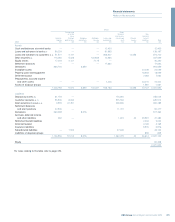 273
273 -
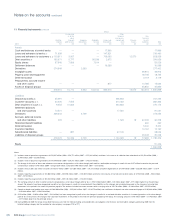 274
274 -
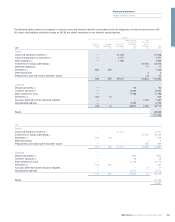 275
275 -
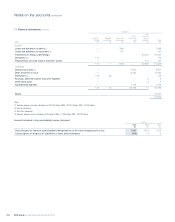 276
276 -
 277
277 -
 278
278 -
 279
279 -
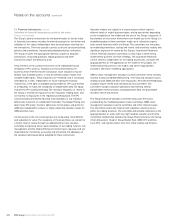 280
280 -
 281
281 -
 282
282 -
 283
283 -
 284
284 -
 285
285 -
 286
286 -
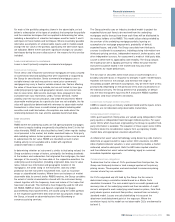 287
287 -
 288
288 -
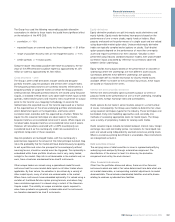 289
289 -
 290
290 -
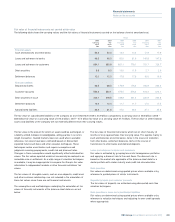 291
291 -
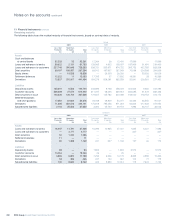 292
292 -
 293
293 -
 294
294 -
 295
295 -
 296
296 -
 297
297 -
 298
298 -
 299
299 -
 300
300 -
 301
301 -
 302
302 -
 303
303 -
 304
304 -
 305
305 -
 306
306 -
 307
307 -
 308
308 -
 309
309 -
 310
310 -
 311
311 -
 312
312 -
 313
313 -
 314
314 -
 315
315 -
 316
316 -
 317
317 -
 318
318 -
 319
319 -
 320
320 -
 321
321 -
 322
322 -
 323
323 -
 324
324 -
 325
325 -
 326
326 -
 327
327 -
 328
328 -
 329
329 -
 330
330 -
 331
331 -
 332
332 -
 333
333 -
 334
334 -
 335
335 -
 336
336 -
 337
337 -
 338
338 -
 339
339 -
 340
340 -
 341
341 -
 342
342 -
 343
343 -
 344
344 -
 345
345 -
 346
346 -
 347
347 -
 348
348 -
 349
349 -
 350
350 -
 351
351 -
 352
352 -
 353
353 -
 354
354 -
 355
355 -
 356
356 -
 357
357 -
 358
358 -
 359
359 -
 360
360 -
 361
361 -
 362
362 -
 363
363 -
 364
364 -
 365
365 -
 366
366 -
 367
367 -
 368
368 -
 369
369 -
 370
370 -
 371
371 -
 372
372 -
 373
373 -
 374
374 -
 375
375 -
 376
376 -
 377
377 -
 378
378 -
 379
379 -
 380
380 -
 381
381 -
 382
382 -
 383
383 -
 384
384 -
 385
385 -
 386
386 -
 387
387 -
 388
388 -
 389
389 -
 390
390
 |
 |

Notes on the accounts continued
RBS Group Annual Report and Accounts 2009280
Credit valuation adjustments (CVA) represent an estimate of the
adjustment to fair value that a market participant would make to
incorporate the credit risk inherent in counterparty derivative exposures.
The Group makes such credit adjustments to derivative exposures it has
to counterparties, as well as debit valuation adjustments to liabilities
issued by the Group. CVA is discussed in Risk, capital and liquidity
management – Market turmoil exposures – Credit valuation adjustments
(pages 193 to 199). Bid-offer and liquidity reserves and own credit are
discussed below.
Bid-offer and liquidity reserves
Trading positions are adjusted to bid (for assets) or offer (for liabilities)
levels, by marking individual cash based positions directly to bid or offer
or by taking bid-offer reserves calculated on a portfolio basis for
derivatives.
The bid-offer approach is based on current market spreads and
standard market bucketing of risk. Risk data is used as the primary
source of information within bid-offer calculations and is aggregated
when it is more granular than market standard buckets.
Bid-offer adjustments for each risk factor are determined by
aggregating similar risk exposures arising on different products.
Additional basis bid/offer reserves are taken where these are charged in
the market. Risk associated with non identical underlying exposures is
not netted down unless there is evidence that the cost of closing the
combined risk exposure is less than the cost of closing on an individual
basis. For example: interest rate delta bid-offer methodology (when
viewed in isolation) allows aggregation of risk across different tenor
bases. Tenor basis bid-offer reserves are then applied to compensate
for the netting within the (original) delta bid-offer calculation.
Bid-offer spreads vary by maturity and risk type to reflect different
spreads in the market. For positions where there is no observable quote,
the bid-offer spreads are widened in comparison to proxies to reflect
reduced liquidity or observability. Bid-offer methodologies also
incorporate liquidity triggers whereby wider spreads are applied to risks
above pre-defined thresholds.
Netting is applied across risk buckets where there is market evidence to
support this. For example calendar netting and cross strike netting
effects are taken into account where such trades occur regularly within
the market. Netting will also apply where long and short risk in two
different risk buckets can be closed out in a single market transaction at
less cost than via two separate transactions (closing out the individual
bucketed risk in isolation).
Vanilla risk on exotic products is typically reserved as part of the overall
portfolio based calculation e.g. delta and vega risk is included within the
delta and vega bid-offer calculations. Aggregation of risk arising from
different models is in line with the Group’s risk management practices;
the model review control process considers the appropriateness of
model selection in this respect.
Product related risks such as correlation risk attract specific bid to offer
reserves. Additional reserves are provided for exotic products to ensure
overall reserves match market close-out costs. These market close-out
costs inherently incorporate risk decay and cross-effects which are
unlikely to be adequately reflected in the static hedge based on vanilla
instruments.
Where there is limited bid-offer information for a product a conservative
approach is taken, taking into account pricing approach and risk
management strategy.
Market risk close-out costs excluding CVA were £2,814 million as at 31
December 2009 (2008 – £3,260 million; 2007 – £1,154 million).
11 Financial instruments continued
Valuation reserves
When valuing financial instruments in the trading book, adjustments are made to mid-market valuations to cover bid-offer spread, liquidity and
credit risk.
Valuation reserves and adjustments comprise:
2009 2008 2007
£m £m £m
Credit valuation adjustments:
Monoline insurers 3,796 5,988 862
CDPCs 499 1,311 44
Other counterparties 1,588 1,738 263
5,883 9,037 1,169
Bid-offer and liquidity reserves 2,814 3,260 1,154
8,697 12,297 2,323
Debit valuation adjustments:
Debt securities in issue (2,331) (2,373) (456)
Derivatives (467) (450) —
Total debit valuation adjustments (2,798) (2,823) (456)
Total reserves 5,899 9,474 1,867
